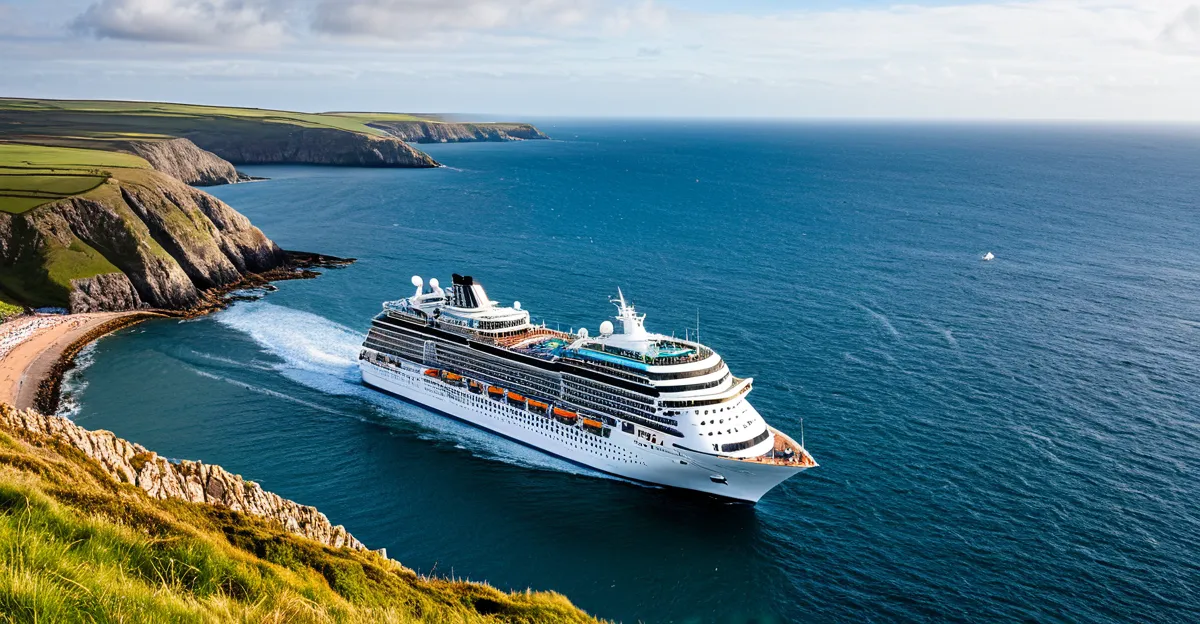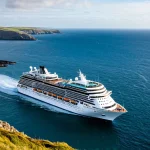Economic and Social Impacts of Cruises on UK Coastal Attractions
Cruise tourism benefits UK coastal towns significantly by injecting substantial spending from passengers into local economies. Visitors often explore nearby shops, restaurants, and attractions, providing crucial revenue streams that help sustain businesses year-round, not just during peak seasons.
A major UK economic impact lies in job creation. From hospitality roles to tour guides and retail staff, the cruise industry supports numerous positions, often in areas where employment options may be limited. This employment boost helps reduce local unemployment and improves living standards within these communities.
Also to read : What makes UK river cruises different from ocean cruises?
Beyond economics, cruise tourism fosters valuable cultural exchange. Passengers and locals engage, sharing traditions and stories, which enriches the social fabric of these coastal areas. This community engagement encourages pride in local heritage and can lead to collaborative efforts in preserving cultural sites and promoting sustainable tourism.
In summary, cruise tourism benefits the UK by combining economic uplift with social enrichment, helping coastal towns thrive. This dual advantage explains why the UK economic impact of cruises continues to grow, offering lasting local community advantages.
Also read : What Are the Must-See Coastal Towns on a UK Cruise Adventure?
Infrastructure Developments Driven by Cruise Tourism
Cruise tourism has been a catalyst for significant UK port enhancements, driving investment to improve facilities that accommodate increasing passenger numbers. Ports have seen upgrades such as extended quays, modernised terminals, and enhanced docking capabilities. These efforts ensure smoother embarkation and disembarkation processes, aligning with the demands of larger cruise ships.
Beyond the ports themselves, transport infrastructure surrounding cruise terminals has benefited greatly. Improved road networks, expanded car parks, and enhanced public transport links have been introduced to boost accessibility. These changes provide convenience not only for cruise passengers but also for local residents and other visitors, exemplifying effective cruise tourism investment.
Partnerships between cruise operators, local authorities, and private stakeholders have helped revitalise waterfront areas. The transformation of these spaces includes better public amenities, pedestrian-friendly zones, and attractive leisure facilities. Such collaborations have not only enhanced the visitor experience but also stimulated local economies, demonstrating how transport infrastructure improvements can yield broad community benefits alongside tourism growth.
Enhanced Experiences at UK Coastal Destinations
The growing popularity of UK cruise destinations has significantly boosted the variety and quality of tourist attractions along the coastline. Ports such as Southampton, Liverpool, and Portsmouth have responded to the influx of cruise travelers by upgrading facilities and offering curated experiences tailored for visitors arriving by sea. This evolution has transformed these coastal towns into vibrant hubs, blending the charm of traditional seaside life with modern amenities.
Exclusive shore excursions designed specifically for cruise travelers present unique opportunities to explore local culture, heritage sites, and scenic landscapes. These excursions often include guided tours of historic landmarks, culinary experiences featuring regional specialties, and nature walks in picturesque settings, all crafted to enhance the visitor experience while fitting within cruise schedules.
Collaboration between cruise operators and local tourism bodies has led to special events timed with ship arrivals, such as festivals, markets, and performances. This synergy enriches the atmosphere and provides memorable moments for tourists. Consequently, UK coastal destinations have seen increased appeal and repeat visitation, showcasing how cruise tourism drives ongoing improvements in the quality and diversity of what these regions offer.
Collaborations Between Cruise Operators and Local Tourism Bodies
These cruise line partnerships are essential for enhancing authentic travel experiences. By joining forces with local tourism development agencies, cruise lines promote regional culture and unique attractions, giving passengers a deeper connection to the destinations. This collaboration often involves engaging local suppliers and artisans, which supports the community and enriches the visitor experience with handcrafted goods and traditional services.
Joint marketing campaigns amplify destination visibility beyond typical travel channels. By pooling resources and expertise, cruise operators and local tourism bodies create compelling stories and promotional content that highlight the area’s appeal, drawing more visitors while maintaining cultural integrity. These partnerships encourage sustainable tourism growth by ensuring that the community benefits economically while preserving its heritage.
Moreover, local tourism development helps tailor shore excursions and activities to showcase lesser-known sites, offering cruise passengers exclusive access to the region’s hidden gems. For travelers seeking immersive and meaningful experiences, these strategic cruise line partnerships guarantee both enjoyment and support for local economies.
Managing Challenges and Ensuring Sustainable Growth
Balancing sustainable cruise tourism with the preservation of delicate coastal environments is a pressing challenge. Expanding cruise tourism often increases pollution and habitat disruption, making environmental management crucial. To address this, cruise operators and authorities have introduced initiatives that significantly reduce environmental footprints, such as implementing stricter waste disposal regulations and adopting cleaner fuel technologies.
Promoting responsible development also involves active community involvement. Local populations play an essential role in shaping sustainable cruise tourism policies by voicing concerns and priorities. Their participation ensures that tourism growth benefits both the economy and the environment without overwhelming local resources.
Key strategies include continuous monitoring of environmental impacts, enforcing compliance with regulations, and investing in educational programs for tourists and staff. This collaborative approach helps maintain biodiversity, supports local livelihoods, and fosters a long-term balance between growth and sustainability.
Adopting these practices contributes not only to protecting natural habitats but also to enhancing the cruise experience, making sustainable cruise tourism a viable and responsible industry moving forward.




